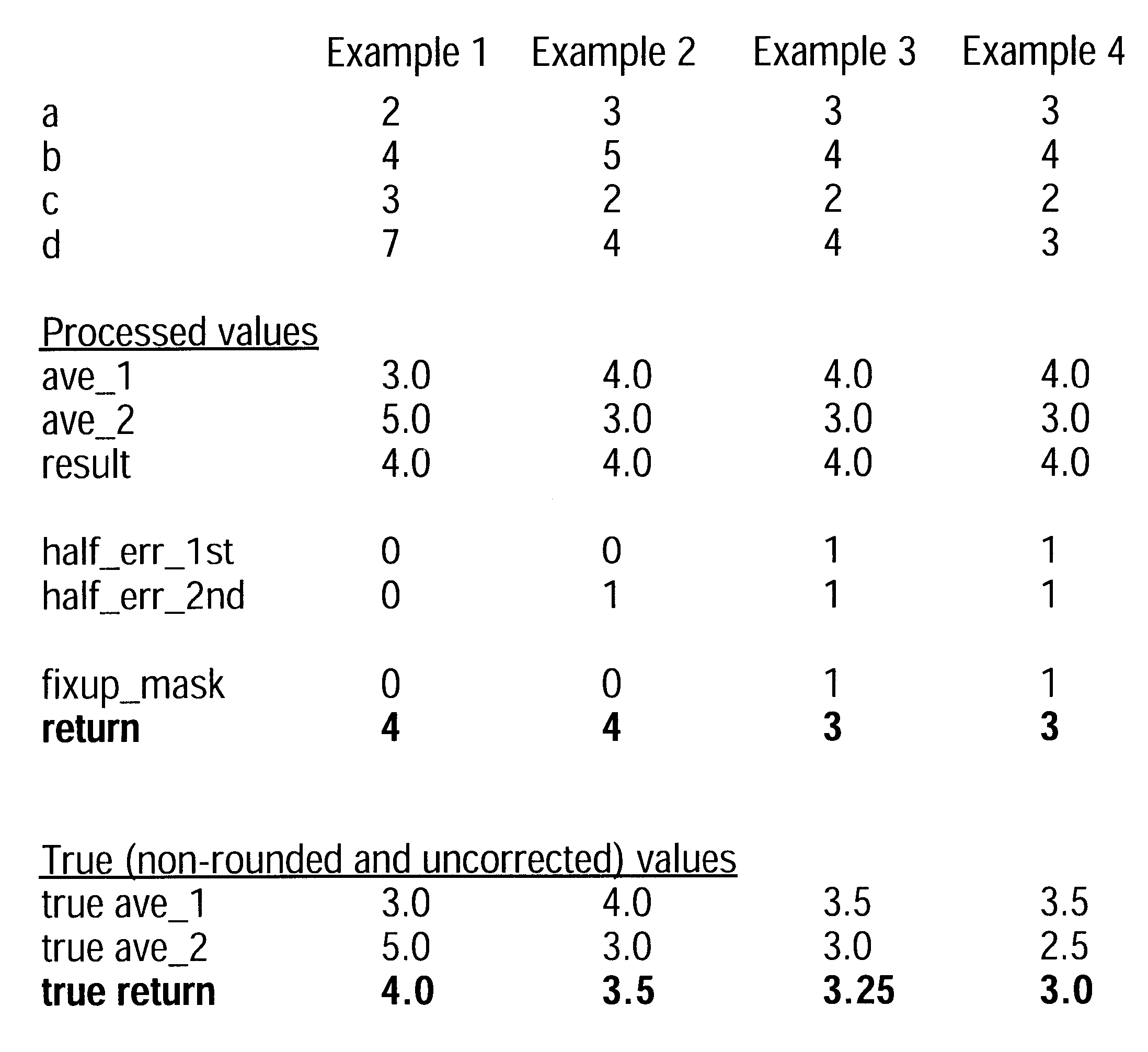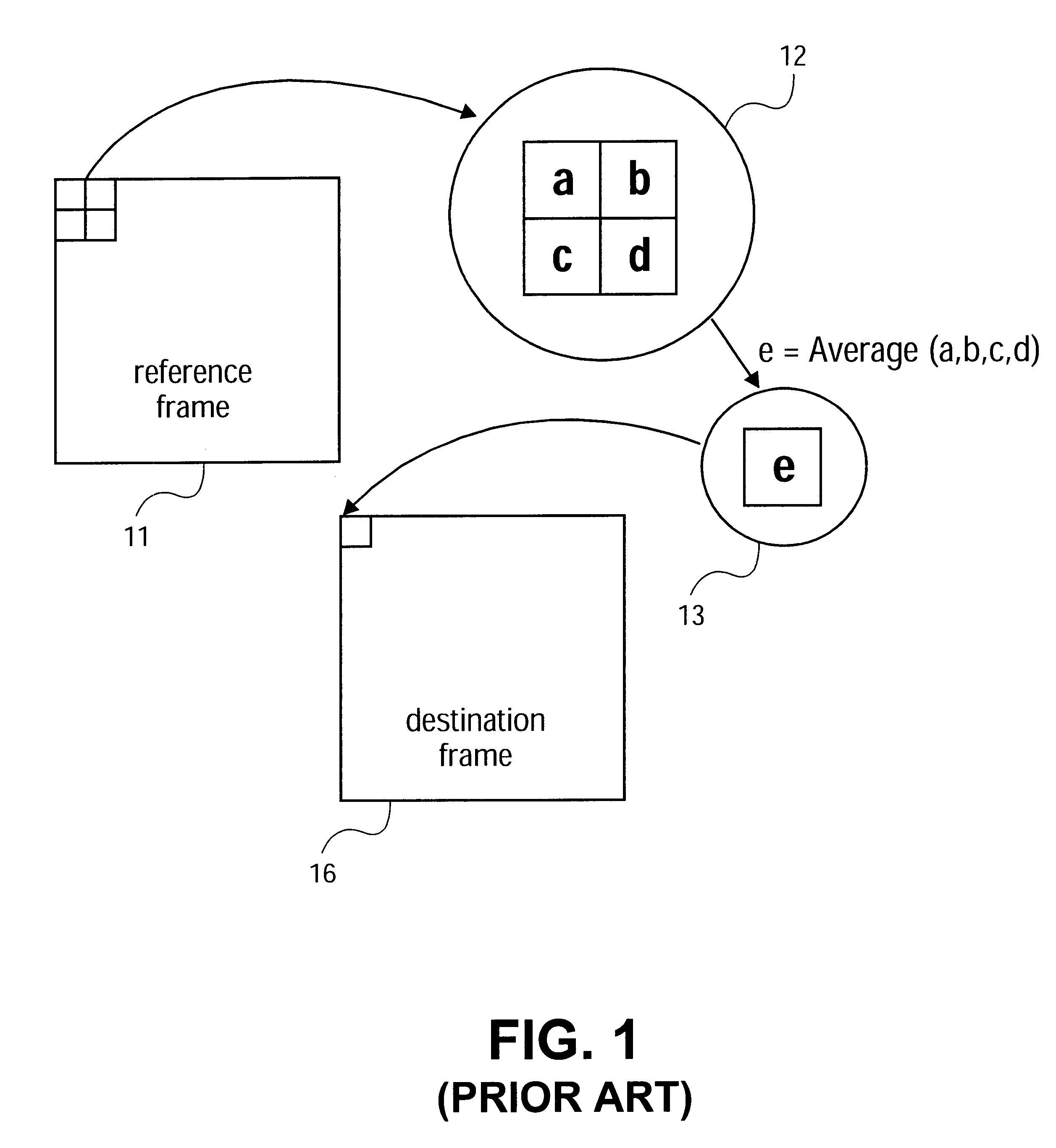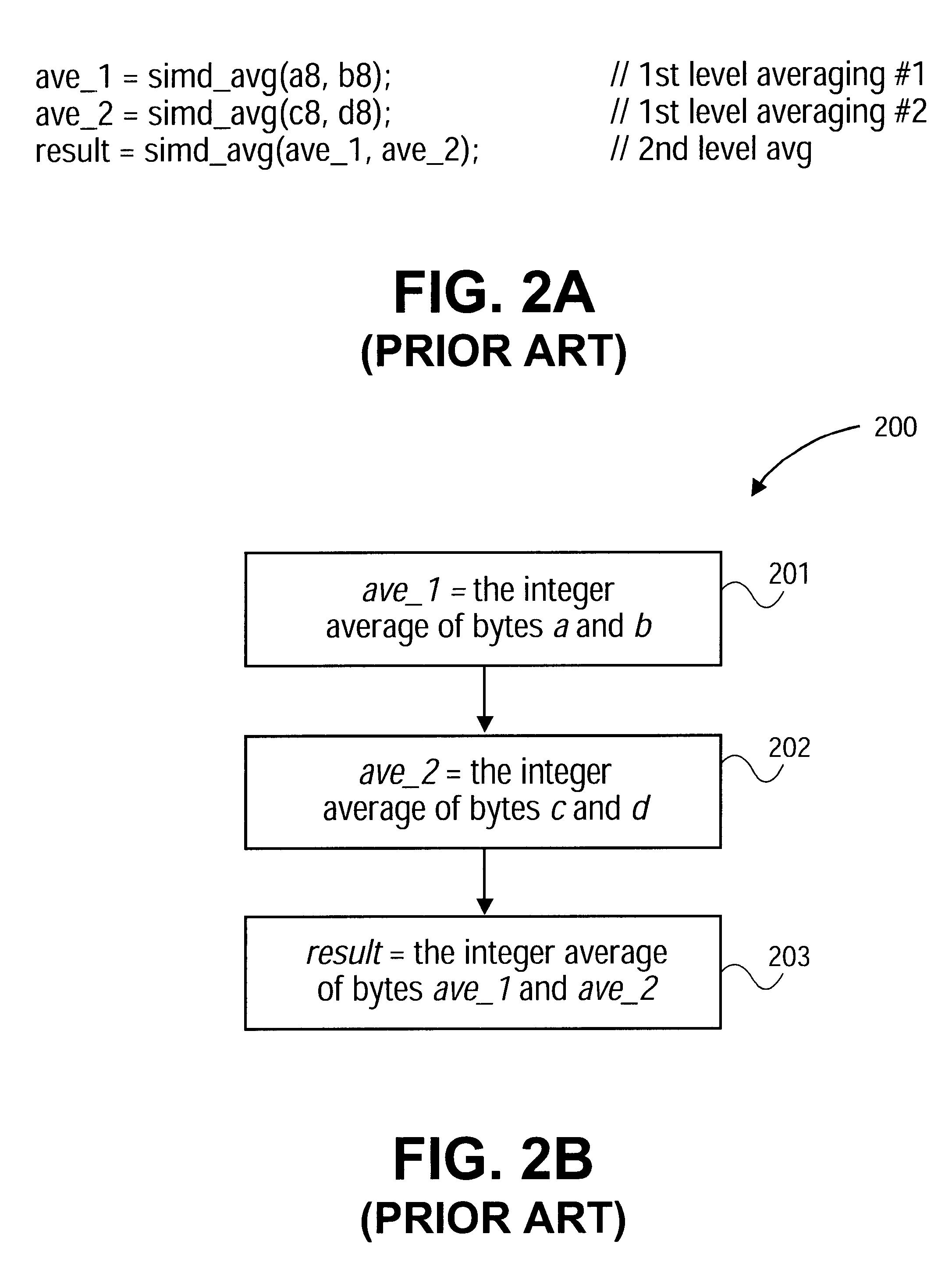Accurate averaging of elements using integer averaging
- Summary
- Abstract
- Description
- Claims
- Application Information
AI Technical Summary
Problems solved by technology
Method used
Image
Examples
Embodiment Construction
, a and b are both even, while c and d are both odd. This condition produces all integer results in stage 1, with no rounding necessary. Therefore, integer averages ave.sub.-- 1 and ave.sub.-- 2 have the same values of 3 and 5, respectively, as are obtained without rounding. This produces no error in stage 1, and a `0` value in half_err.sub.-- 1st. The resulting intermediate averages ave.sub.-- 1 and ave.sub.-- 2 are both odd, which similarly produces a non-rounded integer average for result, and no error is produced in stage 2. Thus, the LSB's of half_err.sub.-- 1st, half_err.sub.-- 2nd, and fixup_mask are all set to `0` to produce no correction factor, and the final calculated answer return is 4, the same as the true average that would be determined with non-rounded precision calculations.
In Example 2, pair a,b are both odd, while pair c,d are both even, again resulting in no error in stage 1 and a `0` value for half_err.sub.-- 1st. However, in this case ave.sub.-- 1 is even, whil...
PUM
 Login to View More
Login to View More Abstract
Description
Claims
Application Information
 Login to View More
Login to View More - R&D
- Intellectual Property
- Life Sciences
- Materials
- Tech Scout
- Unparalleled Data Quality
- Higher Quality Content
- 60% Fewer Hallucinations
Browse by: Latest US Patents, China's latest patents, Technical Efficacy Thesaurus, Application Domain, Technology Topic, Popular Technical Reports.
© 2025 PatSnap. All rights reserved.Legal|Privacy policy|Modern Slavery Act Transparency Statement|Sitemap|About US| Contact US: help@patsnap.com



